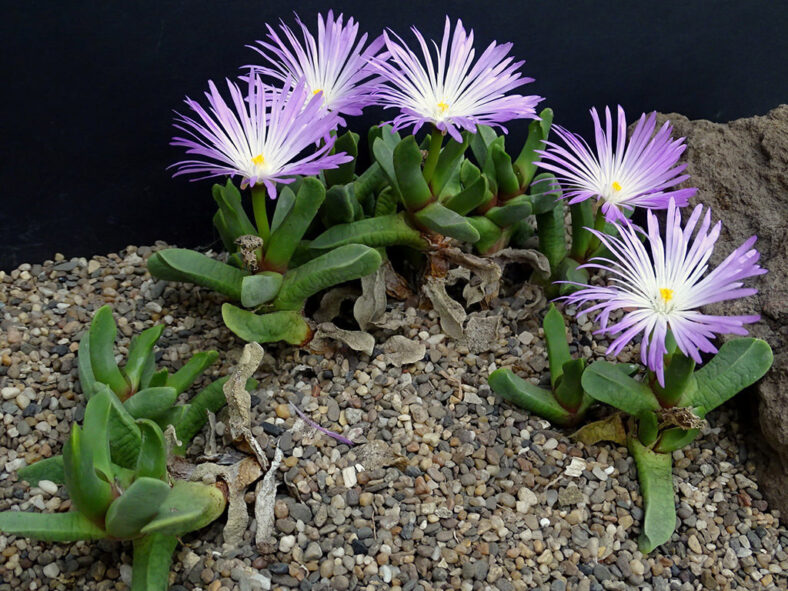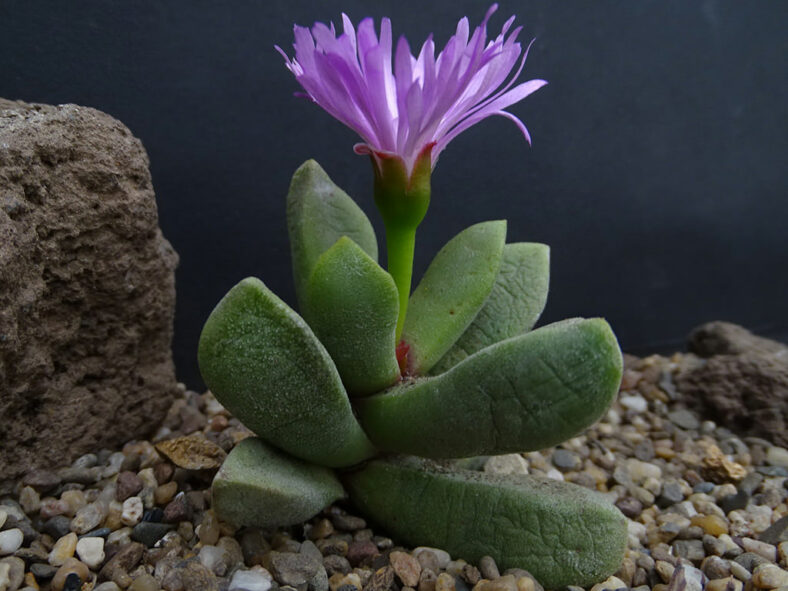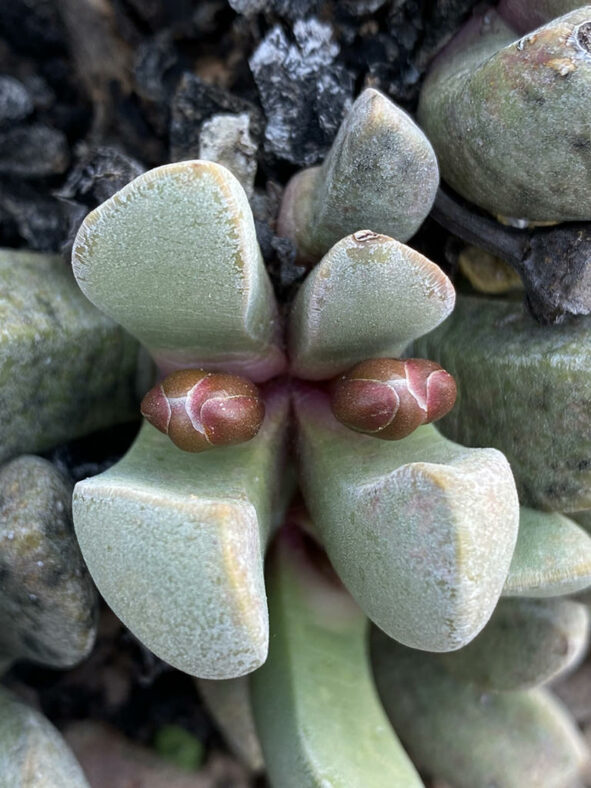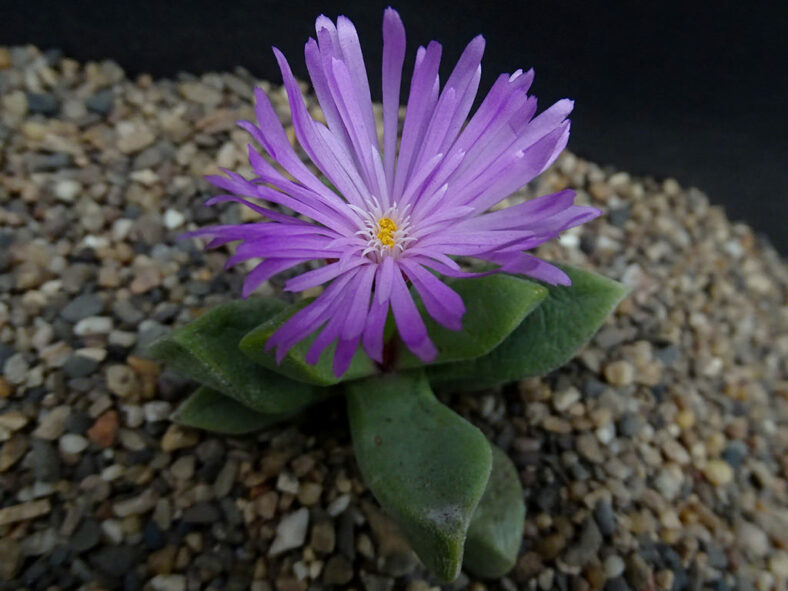Scientific Name
Cerochlamys pachyphylla (L.Bolus) L.Bolus
Synonym(s)
Cerochlamys pachyphylla subsp. albiflora, Cerochlamys pachyphylla var. albiflora, Mesembryanthemum pachyphyllum
Scientific Classification
Family: Aizoaceae
Subfamily: Ruschioideae
Tribe: Ruschieae
Genus: Cerochlamys
Etymology
The specific epithet "pachyphylla (pronounced pak-ee-FIL-uh)" means "thick-leafed" and refers to the thick fleshy leaves.
Origin
Cerochlamys pachyphylla is native to South Africa. It grows on sandstone rocks from Barrydale to Oudtshoorn in the Western Cape province.
Description
Cerochlamys pachyphylla is a small, clump-forming succulent with a short, branched trunk and erect, finger-like leaves arranged in pairs shortly joined at the base. It can grow up to 4 inches (10 cm) tall, forming dense clumps over time. The branches bear up to 3 leaf pairs. The leaves are club-shaped, three-angled near the tips, and can measure up to 2.8 inches (7 cm) long and 0.3 inches (0.8 cm) wide. They are grey-green to yellow-green, flushed red when the plant goes dormant in summer, and covered with a waxy layer, sometimes peeling in parts.
The daisy-like flowers are pink to purple-pink and appear from late fall through winter. The fruits are 5-locular capsules.

How to Grow and Care for Cerochlamys pachyphylla
Light: This succulent needs bright light but does not like too much direct sun. A sunny windowsill where the plant receives 4 to 5 hours of direct sunlight during the early part of the day and partial shade during the afternoon is the perfect spot to grow your C. pachyphylla indoors.
Soil: C. pachyphylla thrives best in porous soil mixes that allow water to drain away quickly. You can use a commercial potting mix specially designed for succulents or make your own.
Temperature: This plant tolerates highly high summer temperatures by going dormant. C. pachyphylla can withstand temperatures as low as 30 °F (-1.1 °C). USDA Plant Hardiness Zones 10a to 11b, 30 to 50 °F (-1.1 to 10 °C).
Watering: C. pachyphylla requires little or no water when it goes dormant, usually in summer. When it begins to grow again in fall, it is safe to water deeply, allowing the soil to dry before between waterings. If leaves start to wrinkle during the growing season, your plant needs water.
Fertilizing: This small succulent is a light feeder and does not need fertilizer if repotted every two years.
Repotting: C. pachyphylla will stay in the same pot for several decades. Repotting is commonly done to give the plant a larger growing space. The best time to repot this plant is at the beginning of its active growth period, but it can be done at almost any time while actively growing.
Propagation: This species is easily propagated by stem cuttings and seeds. The best time to take cuttings is at the end of summer. Sow the seeds in a pot with a well-drained soil mix in spring.
Learn more at How to Grow and Care for Mesembs.
Toxicity of Cerochlamys pachyphylla
C. pachyphylla is considered non-toxic to humans and pets.
Links
- Back to genus Cerochlamys
- Succupedia: Browse succulents by Scientific Name, Common Name, Genus, Family, USDA Hardiness Zone, Origin, or cacti by Genus
Photo Gallery
Click on a photo to see a larger version.


